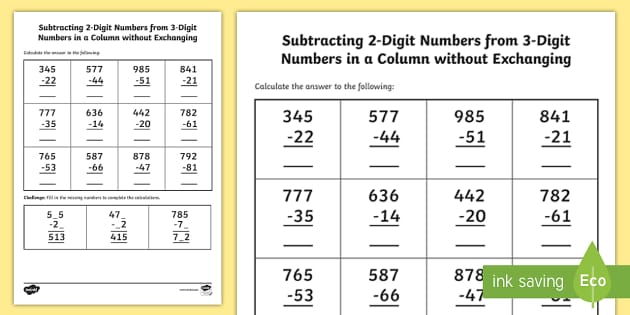In this publication, we will consider the rules and practical examples of how natural numbers (two-digit, three-digit and multi-digit) can be subtracted in a column.
Subtraction Rules
To find the difference between two or more numbers with any number of digits, you can perform a column subtraction. For this:
- Write the minuend in the topmost line.
- Under it we write the first subtrahend – in such a way that the same digits of both numbers are under each other (tens under tens, hundreds under hundreds, etc.)
- In the same way, we add other subtrahends, if any. As a result, columns with different digits are formed.
- Draw a horizontal line under the written numbers, which will separate the minuend and the subtracted from the difference.
- Let’s move on to subtracting numbers. This procedure is performed from right to left, separately for each column, and the result is written under the line in the same column. There are a couple of nuances here:
- If the numbers in the subtrahend cannot be subtracted from the digit in the minuend, then we take ten from the higher digit, and then we must take this into account in further actions
(see Example 2) . - If the minuend is zero, this automatically means that in order to perform a subtraction, you need to borrow from the next digit
(see Example 3) . - Sometimes, as a result of a “loan”, there may be no digits left in the higher digit
(see Example 4) . - In rare cases, when there are many deductibles, it is required to take not one, but two or more dozen at once
(see Example 5) .
- If the numbers in the subtrahend cannot be subtracted from the digit in the minuend, then we take ten from the higher digit, and then we must take this into account in further actions
Column Subtraction Examples
Example 1
Subtract 25 from 68.
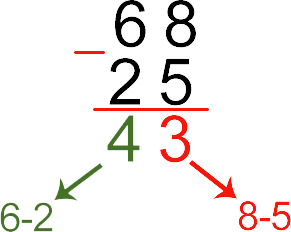
Example 2
Let’s calculate the difference between the numbers: 35 and 17.
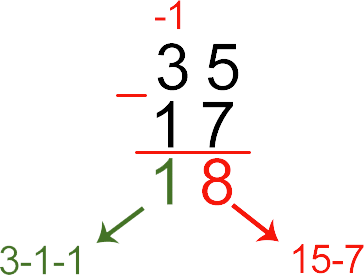
Explanation:
Since 5 cannot be subtracted from the number 7, we take one ten from the most significant digit. It turns out
Example 3
Subtract the number 46 from 70.
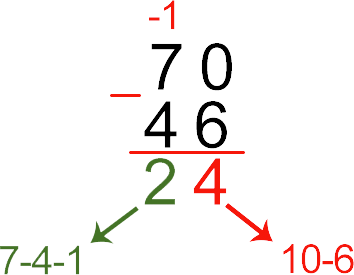
Explanation:
Because 6 cannot be subtracted from zero, we take one ten. Consequently,
Example 4
Let’s find the difference between two-digit and three-digit numbers: 182 and 96.

Explanation:
Subtracting 2 from the number 6 will not work, so we take one ten. We get
Example 5
Subtract from 1465 the numbers 357, 214 and 78.
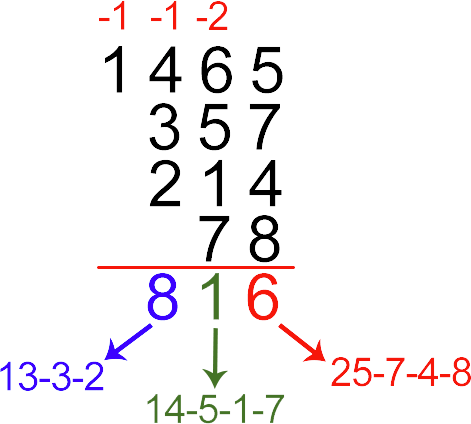
Explanation:
In this case, we perform the same actions as in the previous examples. The only difference is that when subtracting in a column with units, it is required to take not one, but two tens at once, i.e.










